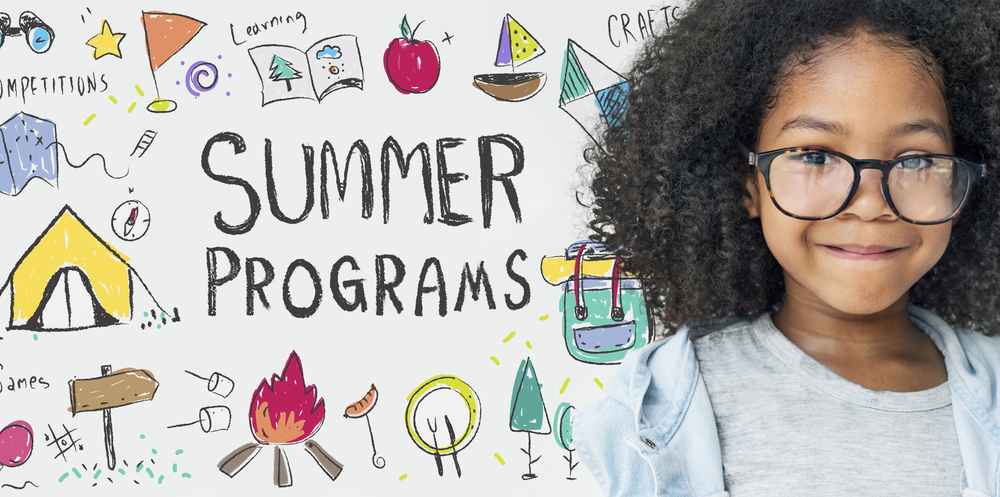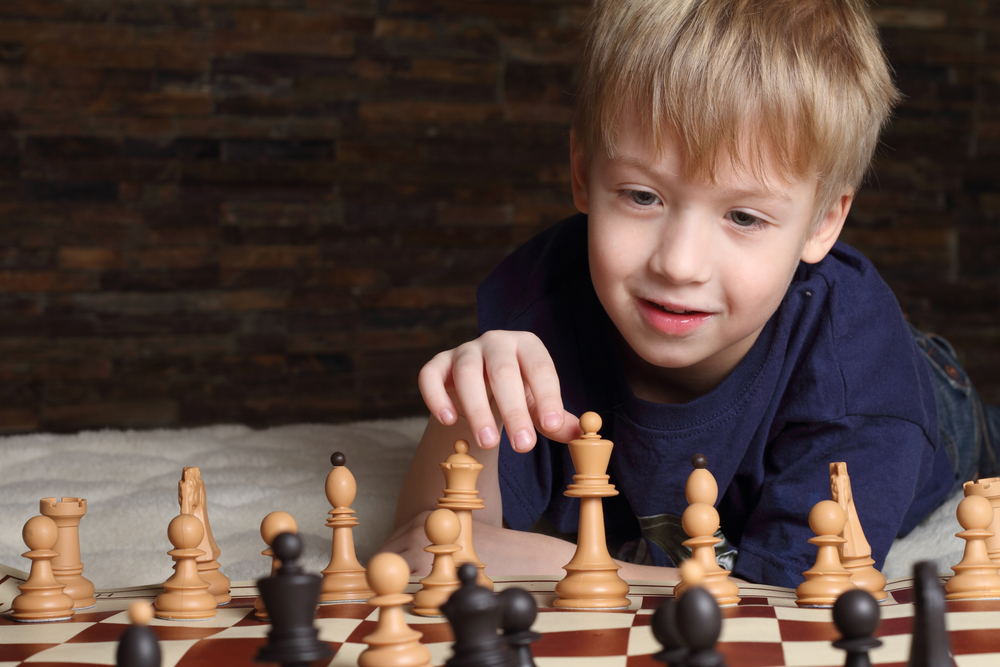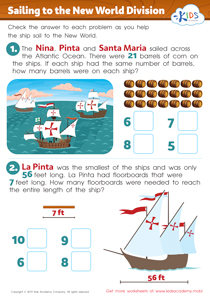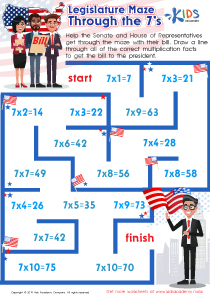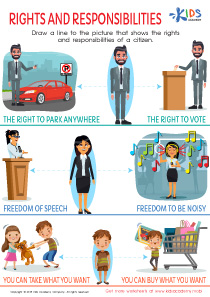Understanding communities Normal Community Worksheets for Ages 4-6
3 filtered results
-
From - To
Explore our engaging "Understanding Communities Normal Community Worksheets" designed specifically for children ages 4 to 6. These worksheets introduce young learners to the concept of communities, fostering vital social awareness and empathy. Through fun activities—such as identifying community helpers, mapping local areas, and discussing roles within a neighborhood—children will cultivate essential skills in communication and teamwork. Perfect for home or classroom use, our materials promote interactive learning and critical thinking. Help your child understand the importance of their community while enhancing their social studies knowledge. Discover a world of learning resources tailored for early education today!
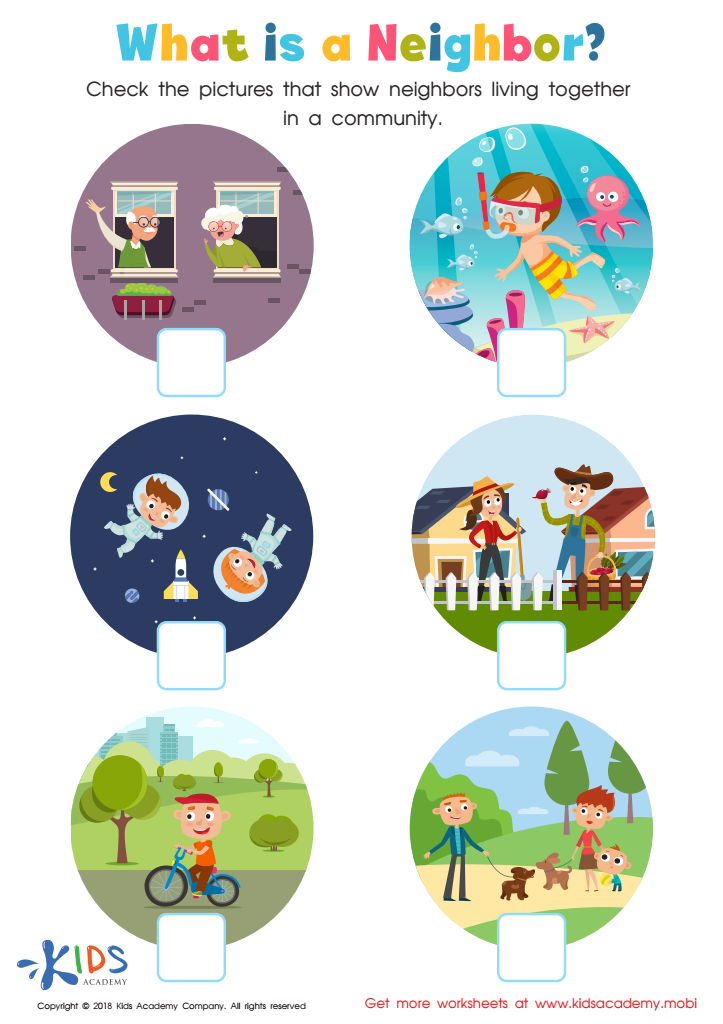

What is a neighbor Worksheet
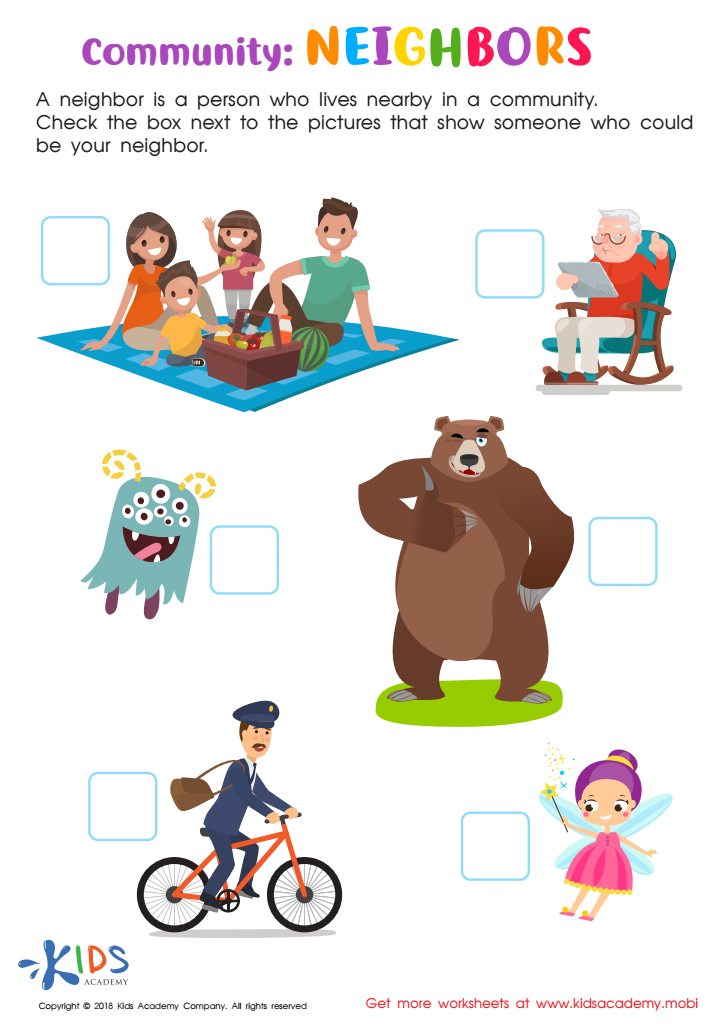

Community: Neighbors Worksheet
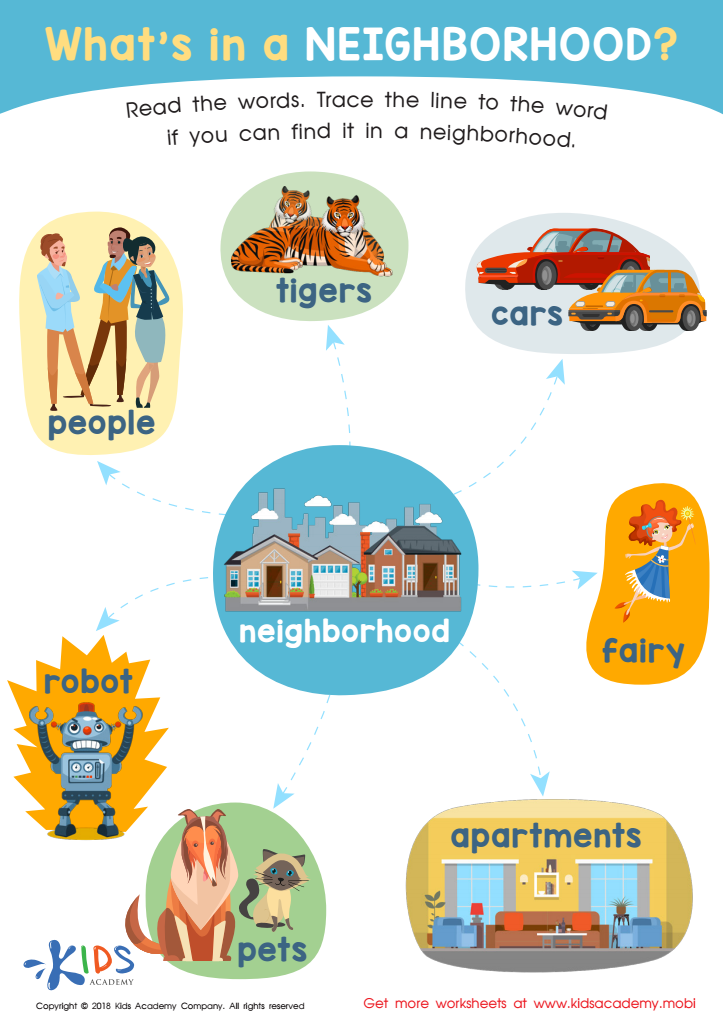

What's in a Neighborhood? Worksheet
Understanding communities is crucial for children aged 4-6 as it lays the foundation for their social development, sense of belonging, and awareness of the world around them. Parents and teachers should prioritize this learning because it helps children recognize the diversity of people and cultures within their communities, fostering empathy, respect, and inclusion from a young age.
By exploring the concept of community, children learn about the roles of family members, neighbors, and local heroes, equipping them with a sense of identity and understanding of interdependence. Acknowledging who is in their community helps nurture strong social skills, as they practice communication, cooperation, and conflict resolution through group play and activities.
Furthermore, discussions around community structure – like parks, schools, and stores – encourage curiosity and critical thinking. Engaging with their surroundings cultivates a love of learning and exploration, vital for intellectual growth.
In essence, making time for community understanding in educational settings enriches children’s experiences, influencing their outlook and interactions as they grow. By investing in this early learning, teachers and parents not only support academic skills but also contribute to developing responsible, compassionate future citizens.
 Assign to My Students
Assign to My Students


